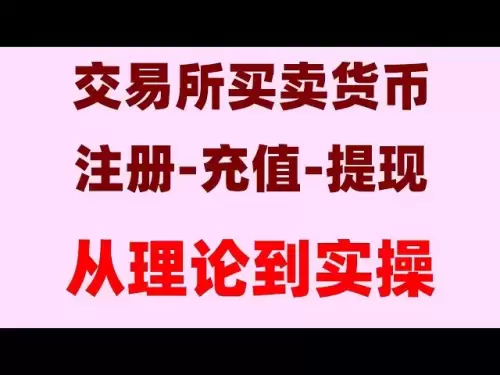 |
|
 |
|
 |
|
 |
|
 |
|
 |
|
 |
|
 |
|
 |
|
 |
|
 |
|
 |
|
 |
|
 |
|
 |
|
ブロックチェーンテクノロジーが発展するにつれて、特にUTXOモデルを採用するブロックチェーンにとって、スケーラビリティとプログラマ性は依然として重要な課題です。

As blockchain technology develops, scalability and programmability remain key challenges, especially for blockchains that adopt the UTXO model. Kaspa, being a layer-one public blockchain with a BlockDAG structure, manages to achieve high throughput but lacks native smart contract functionality, a limitation also faced by other UTXO systems such as Bitcoin. To address this problem, the Kaspa ecosystem developed Kasplex L2, a second-layer solution that integrates smart contracts compatible with the Ethereum Virtual Machine (EVM) based on the Rollup architecture.
ブロックチェーンテクノロジーが発展するにつれて、特にUTXOモデルを採用するブロックチェーンにとって、スケーラビリティとプログラマ性は依然として重要な課題です。 Kaspaは、ブロックダッグ構造を備えたレイヤー1のパブリックブロックチェーンであり、高スループットを達成することができますが、ネイティブスマートコントラクト機能はありません。これは、ビットコインなどの他のUTXOシステムが直面する制限です。この問題に対処するために、KaspAエコシステムは、ロールアップアーキテクチャに基づいてEthereum Virtual Machine(EVM)と互換性のあるスマートコントラクトを統合する2層のソリューションであるKasplex L2を開発しました。
In this article, we will conduct a technical analysis of Kasplex L2 from the perspective of a security and research institution. Our goal is to provide a tangible assessment of its design, technical implementation, and its implications for UTXO blockchains. We will explore how Kasplex L2 works, compare it to Bitcoin Inscriptions (such as BRC-20), and discuss its strengths and limitations. This analysis is intended to contribute to a broader discussion of scalability solutions for the UTXO model blockchain.
この記事では、セキュリティおよび研究機関の観点からKasplex L2のテクニカル分析を実施します。私たちの目標は、その設計、技術的実装、およびUTXOブロックチェーンに対する意味の具体的な評価を提供することです。 Kasplex L2がどのように機能するかを調査し、Bitcoinの碑文(BRC-20など)と比較し、その強みと制限について説明します。この分析は、UTXOモデルブロックチェーンのスケーラビリティソリューションのより広範な議論に貢献することを目的としています。
Understanding Kaspa's primary chain: a high-throughput UTXO blockchain
カスパの主要なチェーンの理解:ハイスループットUTXOブロックチェーン
Kaspa is a first-level blockchain with a BlockDAG structure that allows multiple blocks to be generated in parallel. The design is driven by the GHOSTDAG protocol, which enables Kaspa to achieve a high throughput of 10 BPS. Unlike account-based blockchains such as Ethereum, Kaspa uses the UTXO model, where transactions are verified by consuming unspent outputs and creating new outputs, thus ensuring an efficient verification process.
Kaspaは、複数のブロックを並行して生成できるブロックダッグ構造を備えた最初のレベルのブロックチェーンです。この設計は、GhostDagプロトコルによって駆動されるため、Kaspaは10 bpsの高いスループットを達成できます。 Ethereumなどのアカウントベースのブロックチェーンとは異なり、KaspaはUTXOモデルを使用します。ここでは、手付かずの出力を消費して新しい出力を作成することでトランザクションが検証され、効率的な検証プロセスが確保されます。
While this architecture performs well in payment scenarios, it presents difficulties in terms of programmability. The UTXO model is inherently stateless and lacks the ability to maintain persistent state or perform complex computations — critical features required for smart contracts. As a result, Kaspa's functionality is limited to simple transfers, which has motivated the development of second-layer solutions to expand its capabilities.
このアーキテクチャは支払いシナリオではうまく機能しますが、プログラマ性の点で困難を提示します。 UTXOモデルは本質的にステートレスであり、持続的な状態を維持したり、複雑な計算を実行したりする能力はありません。これは、スマートコントラクトに必要な重要な機能です。その結果、Kaspaの機能は単純な転送に限定されており、その機能を拡大するための第2層ソリューションの開発を動機付けています。
Kasplex L2: Rollup-based blockchain for smart contract execution
Kasplex L2:スマートコントラクト実行のためのロールアップベースのブロックチェーン
The Kaspa ecosystem is exploring three Layer 2 (L2) solutions: Sparkle, Igra L2, and Kasplex L2. Among them, Sparkle is still in the theoretical stage, and Igra L2 is still in the development stage. Our analysis will focus on Kasplex L2 because it is the closest to mature implementation so far.
Kaspaエコシステムは、Sparkle、Igra L2、およびKasplex L2の3つのレイヤー2(L2)ソリューションを調査しています。その中で、Sparkleはまだ理論的段階にあり、Igra L2はまだ開発段階にあります。私たちの分析は、これまでの成熟した実装に最も近いため、Kasplex L2に焦点を当てます。
Among the three L2 solutions being explored by the Kaspa ecosystem—Sparkle, Igra L2, and Kasplex L2—Sparkle is still in the theoretical stage, Igra L2 is still in the development stage, and Kasplex L2 is the closest to mature implementation, so this article will focus on analyzing it in detail.
KaspAエコシステム(スパークル、Igra L2、およびKasplex L2)が検討している3つのL2ソリューションのうち、Sparkleはまだ理論的段階にあり、Igra L2はまだ開発段階にあり、Kasplex L2は成熟した実装に最も近いため、この記事はそれを詳細に分析することに焦点を当てます。
Kasplex L2 is a Rollup-based second-layer scaling solution that relies on the first-level chain for transaction ordering and data availability, shifting the computational load to the second layer. In this design, Kaspa's first-level chain is responsible for determining the standard order of transactions and ensuring that its data is publicly available, while Kasplex L2 performs the task of executing EVM bytecode to realize smart contract functions.
Kasplex L2は、トランザクションの順序とデータの可用性のために第1レベルのチェーンに依存するロールアップベースの2層スケーリングソリューションであり、計算負荷を2番目のレイヤーにシフトします。この設計では、Kaspaの第1レベルチェーンは、トランザクションの標準順序を決定し、そのデータが公開されていることを確認する責任がありますが、Kasplex L2はEVMバイトコードを実行してスマートコントラクト機能を実現するタスクを実行します。
Technical design and workflow
技術設計とワークフロー
The core mechanism of Kasplex L2 is to embed EVM bytecode in the payload of Kaspa primary chain transactions. The process can be divided into the following steps:
Kasplex L2のコアメカニズムは、KaspaプライマリチェーントランザクションのペイロードにEVMバイトコードを埋め込むことです。プロセスは、次の手順に分けることができます。
1. Transaction submission: A user submits a transaction to the Kaspa primary chain, and the payload of this transaction contains EVM bytecode. For example, this payload may encode a call to the HelloWorld() smart contract function.
1。トランザクションの提出:ユーザーはカスパプライマリチェーンにトランザクションを提出し、このトランザクションのペイロードにはEVMバイトコードが含まれています。たとえば、このペイロードは、HelloWorld()スマートコントラクト関数への呼び出しをエンコードする場合があります。
2. First-level chain orders transactions: Kaspa's BlockDAG orders these transactions within its DAG structure, providing a deterministic transaction sequence.
2。第1レベルのチェーン注文トランザクション:KaspaのBlockDagは、DAG構造内のこれらのトランザクションを注文し、決定論的トランザクションシーケンスを提供します。
3. Layer 2 performs efficient execution: Kasplex L2 runs as an indexer, scanning the payload transactions on the primary chain, extracting the EVM bytecode, executing it in the specified order, and updating its state. Invalid or conflicting transactions (such as transactions attempting to double-spend) will be discarded.
3.レイヤー2は効率的な実行を実行します:Kasplex L2はインデクサーとして実行され、プライマリチェーンのペイロードトランザクションをスキャンし、EVMバイトコードを抽出し、指定された順序で実行し、状態を更新します。無効または競合するトランザクション(2倍の支出を試みるトランザクションなど)は破棄されます。
Transaction submission mechanism
トランザクション提出メカニズム
Currently, Kasplex L2 supports two transaction submission methods, each having different effects:
現在、Kasplex L2は2つのトランザクション送信方法をサポートしており、それぞれが異なる効果を持っています。
1) Canonical Submission: Transactions are submitted directly to L1 through Kaspa-compatible wallets. This method does not require relay nodes and complies with the decentralization principle of the blockchain system.
1)標準的な提出:トランザクションは、カスパ互換のウォレットを介してL1に直接送信されます。この方法では、リレーノードを必要とせず、ブロックチェーンシステムの分散化原理に準拠しています。
2) Proxied Submission: Transactions are submitted through a relayer to be compatible with EVM tools like MetaMask. The relayer forwards the transaction to Kaspa L1 to ensure that it is recorded before being processed by L2. This approach prioritizes user convenience but introduces a reliance on relayers.
2)提出された提出:トランザクションは、メタマスクなどのEVMツールと互換性があるように、中継者を介して送信されます。リレーヤーは、トランザクションをKaspa L1に転送して、L2によって処理される前に記録されることを確認します。このアプローチは、ユーザーの利便性を優先しますが、中継者への依存を紹介します。
The proxy submission mechanism ensures atomicity by requiring all second-layer transactions to be anchored on the L1 chain. If a transaction is generated on L2 but has not yet been recorded on the primary chain, the relayer will submit it to the L1 chain for confirmation. This design prevents "native
プロキシ提出メカニズムは、すべての第2層トランザクションをL1チェーンに固定することを要求することにより、原子性を保証します。トランザクションがL2で生成されているが、プライマリチェーンにまだ記録されていない場合、リレーヤーは確認のためにL1チェーンに提出します。このデザインは「ネイティブ」を防ぎます
免責事項:info@kdj.com
提供される情報は取引に関するアドバイスではありません。 kdj.com は、この記事で提供される情報に基づいて行われた投資に対して一切の責任を負いません。暗号通貨は変動性が高いため、十分な調査を行った上で慎重に投資することを強くお勧めします。
このウェブサイトで使用されているコンテンツが著作権を侵害していると思われる場合は、直ちに当社 (info@kdj.com) までご連絡ください。速やかに削除させていただきます。


























































